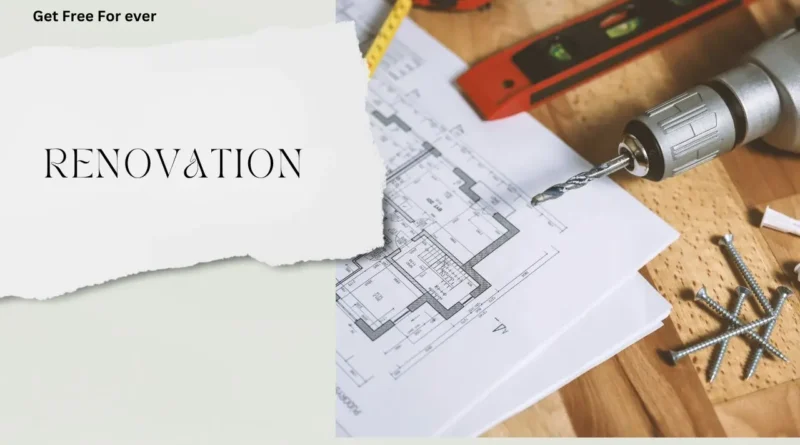Stages of flat renovation and deadlines
One of the most common questions our customers have before work begins is: ‘How long will the renovation take and how will it go?’. This is the second most important question after ‘How much does it cost to renovate a flat?’. Because completed work in time is as important as a quality floor or evenly pasted wallpaper. Therefore, we have prepared an article for you, from which you will learn:
– what the main stages are divided into a standard repair of the flat
– how long each separate stage of repair takes
– how long it will take to complete a turnkey renovation.
What do the renovation timeframes depend on?
Even at the pre-planning stage, before you start the renovation, you can predict how long your renovation will take. To do this, you need to identify the main factors that directly affect the timing of the repair. Their list is presented below:
- The area of the apartment. As cliché as it may sound, but the larger the meterage, the longer the repair will take;
- Type of repair (major, cosmetic, etc.) and the complexity of the work. By labor intensity and time costs of repair can be divided into types: comfort, standard, business class and premium. Accordingly, the higher the class of repair, the more complex materials and types of finishes will be used in the work. Performing labor-intensive work, finishing more complex materials respectively requires more time and vice versa.
- From the composition of the team that performs the work, and optimize the work itself. If the team includes narrow specialists (electrician, plasterer, painter), then compared to the masters-universal, they will perform the same work faster by 30%. Also the terms are reduced if some work is performed in parallel, for this also requires masters with different specialties. With this approach is important competent organization of the process and clear planning.
- From the presence of a design project. Competently drawn up design project – this is half the success, because it allows you to optimally plan the work, avoid downtime and other overlaps.
- The initial state of the housing – for example, complex repair in a new building realizov
The main stages of repair.

When repairing an apartment quite a lot of stages replace each other. You can even say that each separate work, it is a small stage, which requires a certain preparation, and should be carried out clearly in its own time. But in general, repair work can be divided into 4 stages:
- Preparatory stage (dismantling);
- rough finishing;
- Prechistovaya finishing;
- Finishing.
Let’s dwell on the timing of each stage in more detail.
Dismantling works
The preparatory stage is the beginning of the beginnings of any renovation. In order to create something new, it is necessary to get rid of the old. In this case, it is necessary to clean the surface from the old finishing materials and prepare the walls, ceiling and floor for the installation of new ones. From how well the dismantling is done, largely depends on the result of the work.
The timing of dismantling depends on where the work is carried out. If we are talking about secondary housing in a panel house of new housing stock, the work will take up to 1 week. Dismantling in secondary housing in houses of the old housing stock – up to 2 weeks. In a new building dismantling is done if necessary and takes 2-3 days, depending on the redevelopment
The amount of preparatory work depends on the initial condition of the apartment. Usually the ceiling is cleaned from paint, walls from wallpaper, and the floor from carpeting or linoleum. Skirting boards, tiles, electrical points, fixtures and plumbing (faucet, toilet, sink, towel dryer) are dismantled. Depending on the design project, more serious works are also carried out. Such as the dismantling of interior partitions or the device of new openings in the walls.
Dismantling is the first step of repair work and while your apartment is still far from ideal. However, you will be pleased to know that the 1st step of 4 steps has already been completed. Dismantling is also one of the most “dirty” and one of the noisiest parts of the repair. Therefore, it is important to strictly follow the legal regulations on the permissible time for dismantling or other noisy construction work, as well as the removal of construction waste. These regulations prohibit construction waste to be thrown to the household waste bin, and prescribe that it should be taken to a specially designated place for construction waste.
Rough-in and engineering
What is it with a not very glamorous name – rough finishing? The concept of rough finishing includes works related to the leveling and preparation of the main surfaces (floor, ceiling, walls) for their subsequent finishing, the construction of partitions and plasterboard structures, the formation of doorways, the laying of plumbing pipes and electrical networks. This stage takes quite a long period of time – from 50% or more of the total repair period. But because of its importance for the final result of repair work, it can not be reduced.
Erection of interior partitions and door openings
Additional room dividers and doorways are made of brick, cellulose block or foam block. Brick partitions are more time-consuming to erect than cellulose and foam block. Brick is smaller in size and its laying takes more mortar. On average, for one day of brick can be erected partition area of up to 10 -12m2. Partitions with an area of up to 15-18m2 can be erected every day from pazogrebny or foam block. In an apartment of 72m2 (which we took as an example), we will build partitions from tongue and groove boards, and their installation will take from 3 to 5 days.
Laying of electrical networks;
Electrical wiring works include wall drilling, cable laying, installation of sockets. On average, the work in our 72m2 apartment will take from 4 to 5 days. On the terms of installation of electrics directly affects the way of laying electrical networks. They can be installed in three different ways: open, concealed and combined.
- In the open method of installation, the cable is laid in special boxes, cable channels. Staples and clips are used for fastening.
- With concealed installation, the wiring is located in the wall. Preliminary drilling of the channel is carried out. Also the cable is mounted in voids, ceiling ceilings, under flooring and behind drywall.
- The combined method combines open and concealed installation.
Floor screed is made to level the floor during major renovation of an apartment. For cement-sand screed is used a mortar of cement, sand, water and additives that provide strength and elasticity of the mortar. For a thick layer, over 6 cm, in the mixture is additionally added expanded clay, allowing to lighten the screed and reduce the cost of rigging work. Reinforcing fibers and modifiers prevent cracks. The service life of such a screed is counted in tens of years. The only disadvantage of cement-sand screed is long drying after pouring. The period of work on pouring the floor in our apartment from the example – 4-6 days. After pouring it is recommended not to proceed to the next work for 2-3 days for the primary set of strength of the cement-sand mortar. Full set of strength of the screed occurs after 28 days. But do not be frightened, it does not mean that almost a month in your apartment or house will not work. In parallel with the drying of the floor screed usually work on plumbing, and if there is no high humidity in the apartment, you can start pre-finishing.
